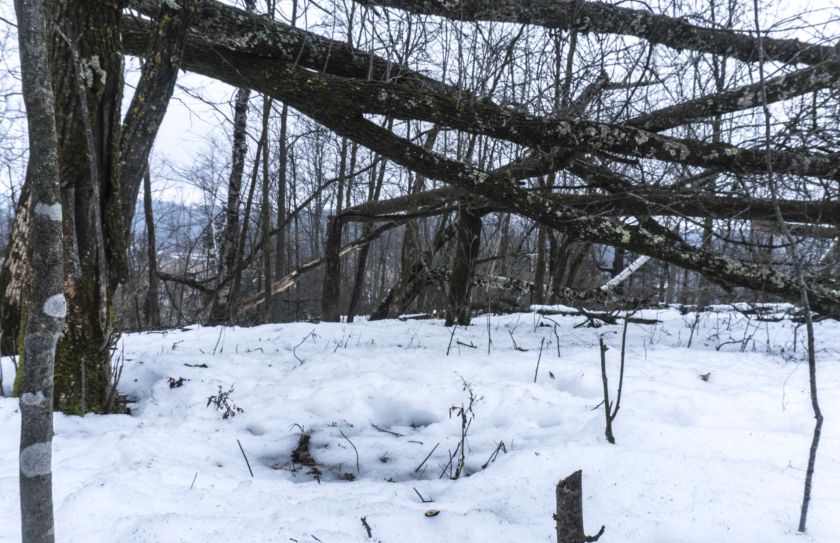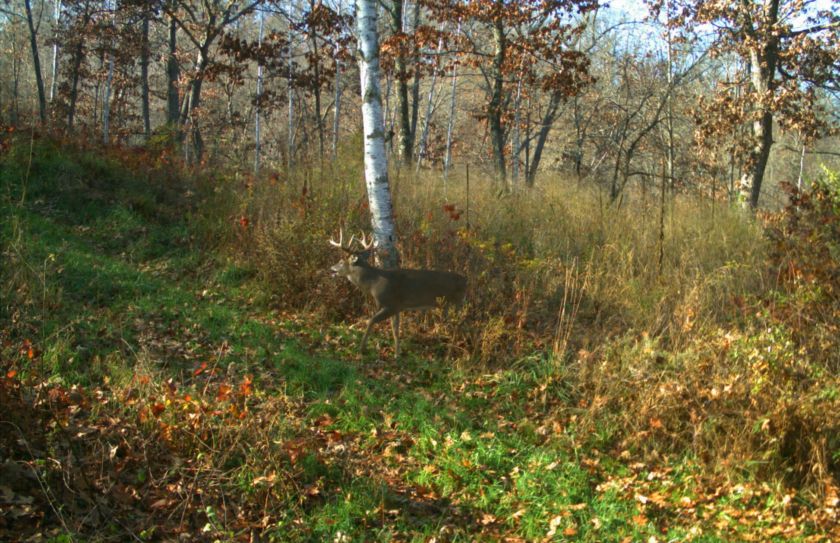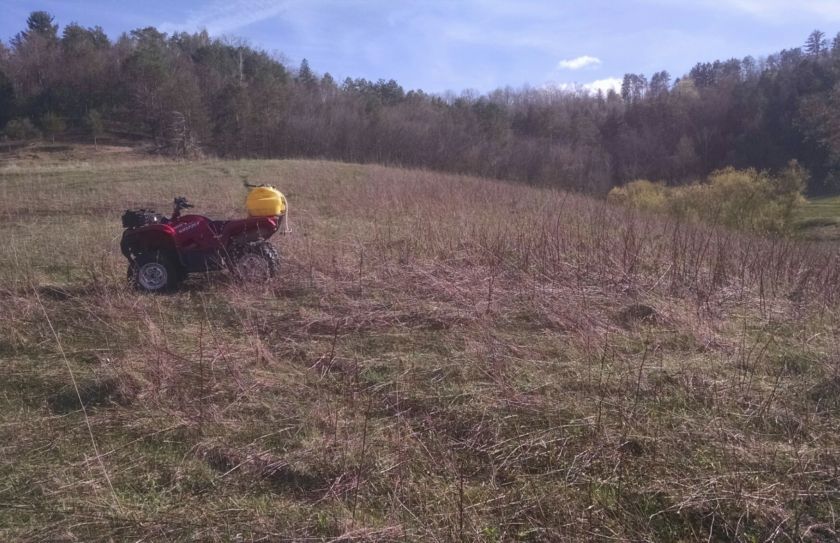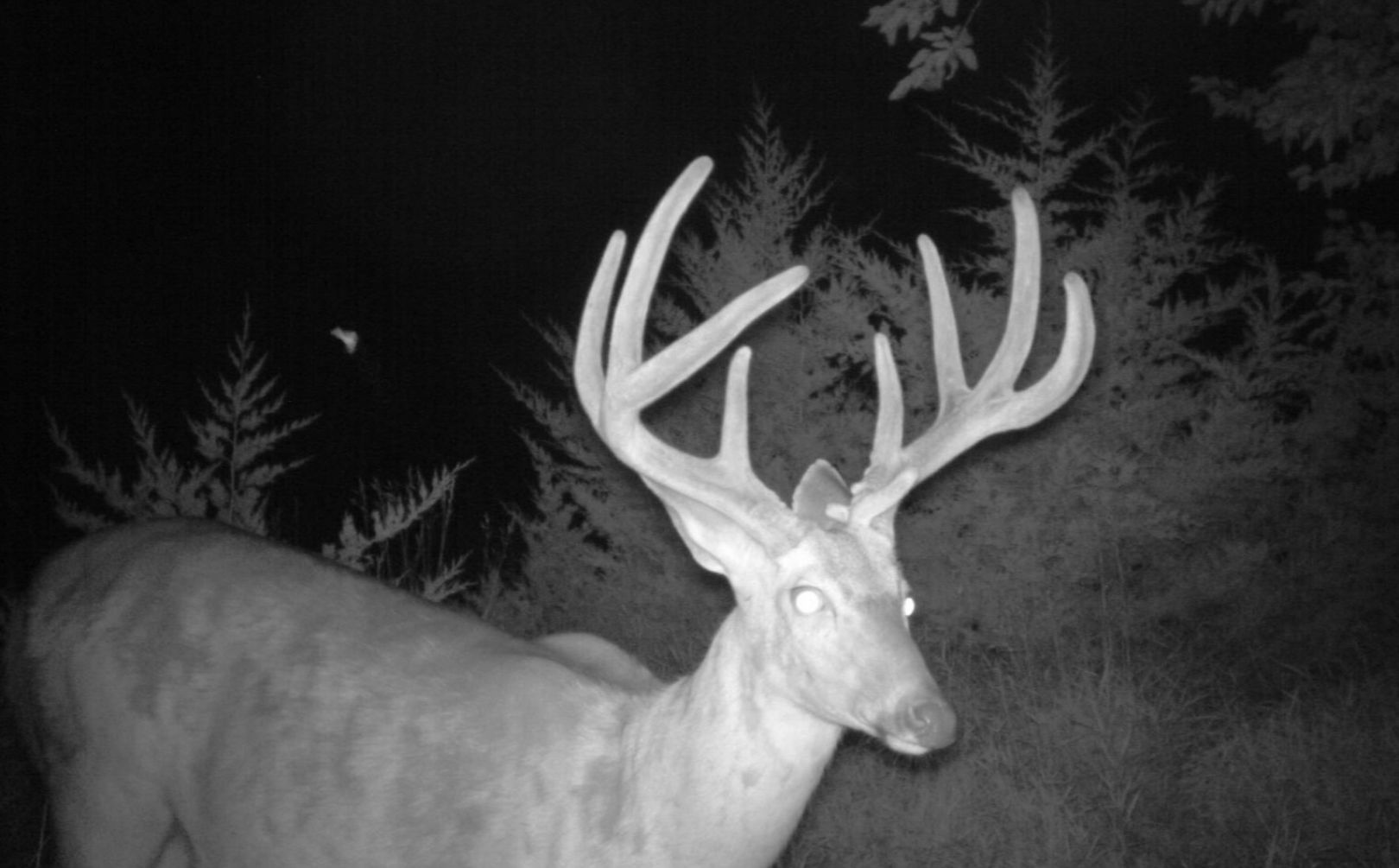
Have you taken full advantage of your red cedar deer bedding opportunities? You really should! I can't wait to share with you the advanced herd, habitat and hunting management opportunities that you can realize, if you already have red cedar growth on your land. Not only can red cedar be established within poor soil locations, including dry and rocky sites, but red cedar is an incredible variety of base bedding cover, for high quality deer habitat. Without a form of base cover for a bedding area, the whitetail habitat that you are attempting to create will be severely lacking. Common, quality base covers include: Switchgrass plantings, various conifers (in particular spruce or red cedar), hardwood regeneration and a variety of shrub species. Which is the best base cover for the creation and management of deer bedding areas?

*Don't forget to check out my trilogy of Advanced Whitetail Strategy books, including my food plot strategy book,"Food Plot Success by Design".
The Best Deer Bedding Cover:
While the best form of whitetail habitat for bedding is highly debatable, I urge you to spend least amount of time pondering the #1 variety, and the most amount of time considering what is already present as well as what will growth the fastest, given the soil and climate conditions you are working with. Also, do not fall into the trap of common deer habitat management, by replacing some of the best forms of deer bedding opportunity, with timber production species.
If timber management is your overall goal, buy some land with a great stand of northern hardwoods or row planted pines. However, if the ultimate deer herd and hunting opportunity is your focus, consider that some of the best deer habitats include a heavy supply of poor timber production species, and the deer bedding base cover of red cedar is no exception.
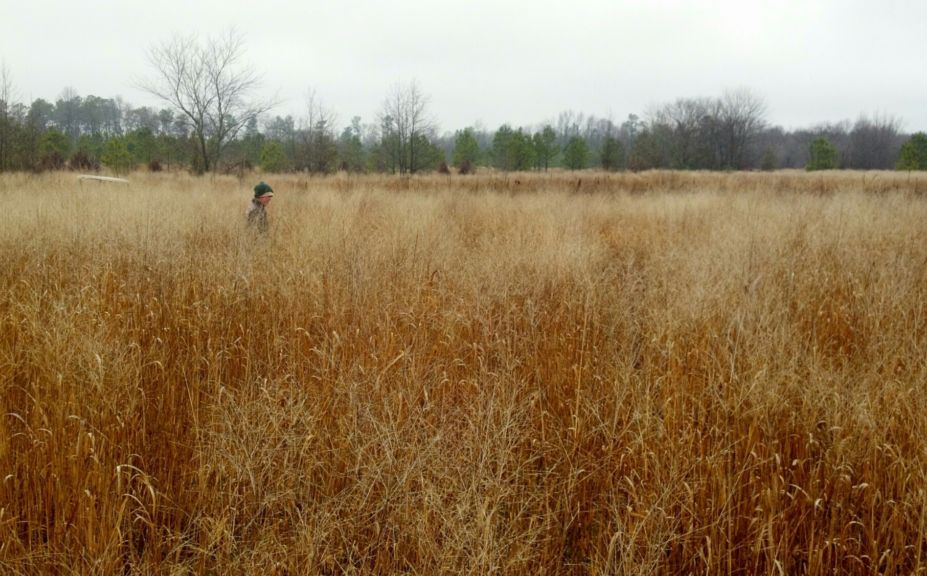
*This sea of switchgrass is an incomplete bedding picture, without 1 very important ingredient! What is that ingredient? Make sure to check out, "Deer Browse For Daytime Bedding".
Remove and Re-plant Red Cedar Bedding Cover?
As someone who loves all that is whitetail, I cringe when I hear of many "hack and squirt" Timber Stand Improvement (TSI) practices designed to remove low quality timber production species. Many common TSI removal practices are actually geared towards the removal of numerous high quality whitetail habitat species, including: Poplar, box elder and even sometimes, red cedar. Do you have a duel purpose parcel? You can certainly carry a blend of both timber production and whitetail herd, habitat and hunting strategies on your land. However, it is critical that you design the habitat components on your land to fit within an adequate whitetail habitat management program first, if your priority for purchasing your land in the first place, was to manage whitetails vs. the potential of the ultimate number of "boards per foot" within a timber production program.
An adequate whitetail habitat management program considers not only how to manage the habitat to optimize herd and hunting opportunities, but to specifically design exactly where whitetails will bed, travel and feed during the daytime, on your land. Various TSI practices can drastically hinder your whitetail goals or they can significantly assist you in attaining them. It is highly worth your resources of time and money to have someone who is extremely familiar with advanced hunting and herd movement behavior techniques, to assess the balance of whitetail habitat practices specifically for your parcel. When it comes to red cedar deer bedding opportunities, it pays to understand the incredible opportunities that await, for the savvy whitetail habitat manager focusing on the ultimate goal of implementing advanced whitetail habitat strategies.
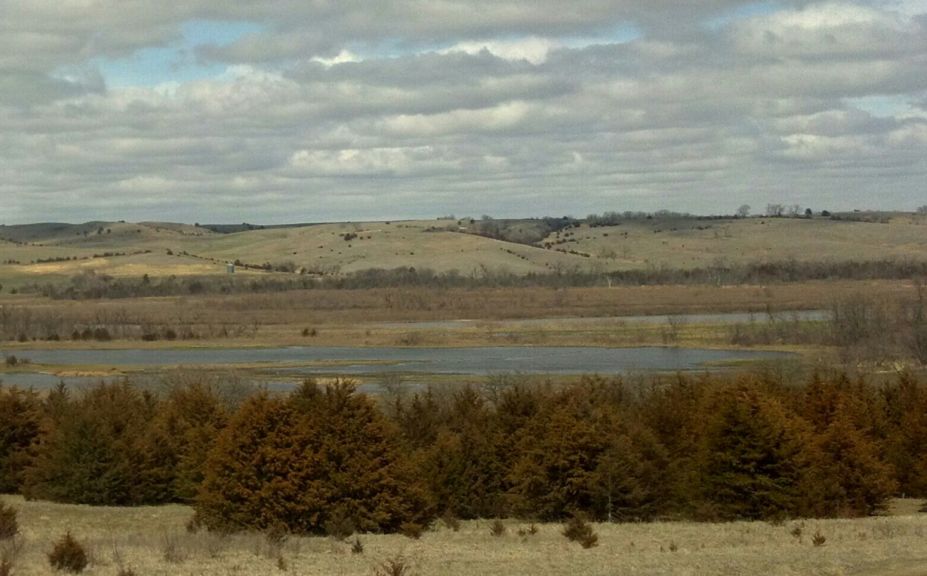
*Are you considering a conifer bedding are planting this year? Make sure to read, "Conifer Plantings For Deer Habitat"
How Do You Create Red Cedar Deer Bedding and Habitat Opportunity?
The higher the level of diversity on your whitetail property, the higher the potential for the development of herd and hunting success. Through diversity, you can use the base cover of red cedar, to highly define the daily deer usage on your land, and here are 3 of my favorite methods to do so:
1. Red Cedar Pocket Bedding Diversity
-To my horror, I have seen large red cedar stands of 10 acres or more, completely removed and replanted in a hardwood species or allowed to turn into early successional growth, to create bedding opportunity! What a waste. Why? Because either method can take 8-12 years or more to even begin to offer moderate bedding cover, while the perfect bedding opportunity was there to begin with. However, a solid stand of red cedar alone, like any base of deer bedding cover, needs to be diversified! Deer feed 5 times during a 24 hour period, so whether your base is grass, shrub or conifer, you need to add enough daytime forage for at least 2 browsing windows. What I recommend that you do is to remove up to 50% of the bedding base, in an effort to diversify. By creating a never ending network of corridors and garage to house-sized pockets, you can remove red cedar to expose the soil. Then, by scarifying the soil you can expose weed seeds and root stock that has been cover for decades by the red cedar growth. You can then use the remaining red cedar to form a base of immediate thermal and screening cover, for deer that will gravitate to the early successional growth within the exposed soil. Then, it it is a great time to practice a hack and squirt practice targeting any new red cedar growth within the diversity openings and corridors, while at the same time considering the option of hardwood and shrub plantings to jumpstart the process. However, by simply removing and scarifying, you will create the necessary food component to specifically define where deer will choose to bed within an otherwise sea of red cedar growth.
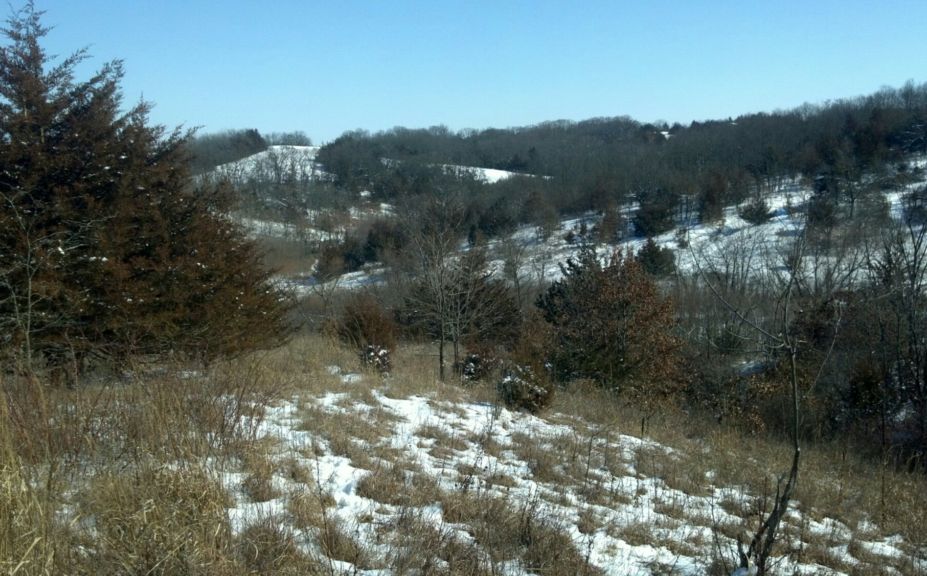
*To create some of the best deer bedding cover types you can find, make sure to read, "The Most Important Cover For Whitetails".
2. Red Cedar Corridors For Highly Defined Deer Travel
-Who says that you can't define deer usage within large stands of Red Cedar? If you would like to connect defined red cedar deer bedding pockets to an evening destination food source, or from hardwood bedding hinge cuts through cedar to a food source or any other form of travel corridor connection, you can easily do so! If in hill country make sure to follow various benches and saddles, but by removing cedar within a corridor of 40-60' wide, you can create a forage-filled early successional growth of deer travel opportunity. This practice can be highly effective for setting up a quality stand location or two, and can be completed in the same manner as the red cedar deer bedding pocket method.
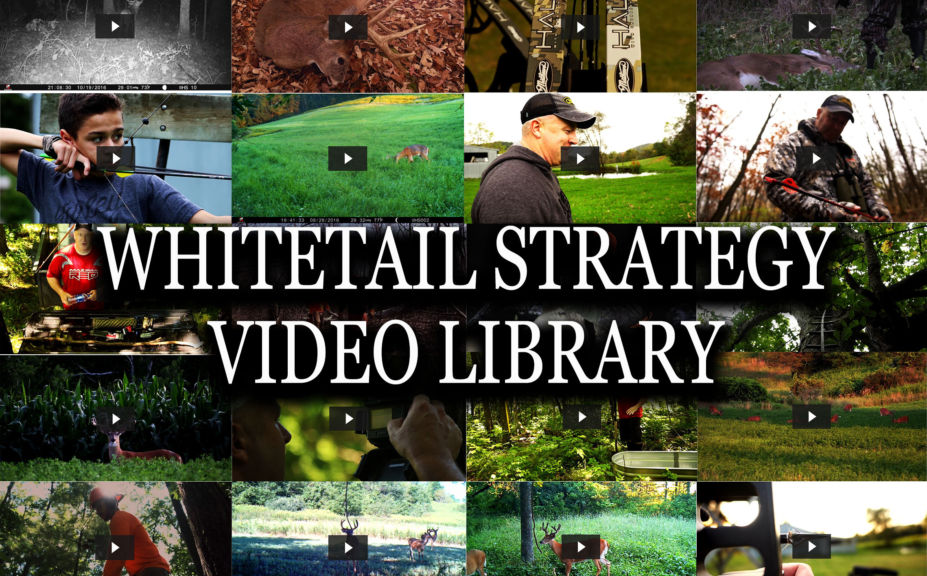
3. Red Cedar Food Plot Corridors
-Red cedar diversity isn't only for travel corridors and deer bedding. If you need to add more food to the mix, a snaking line of food can be constructucted through red cedar to create precision feeding opportunities for hidden whitetails. If your food plot is running in a North/South direction, you can get away with food plots as little as 10-20' wide for adequate sun exposure, and if your red cedar food plot connection is traveling East/West, make sure to build at least 40-60' wide too allow enough South-facing sunlight to reach the soil.
By combining methods 1 through 3, you can use the base of red cedar deer bedding cover to accomplish all of your advanced whitetail herd and hunting efforts, so don't miss out!
